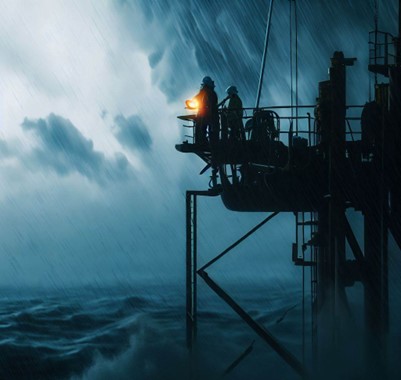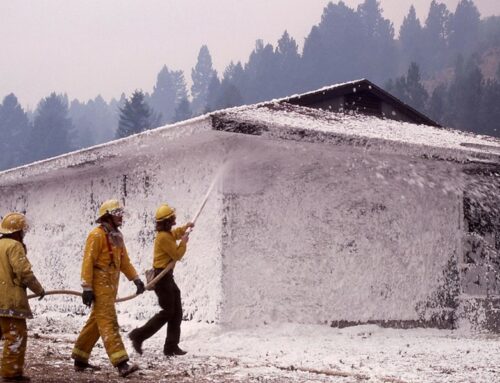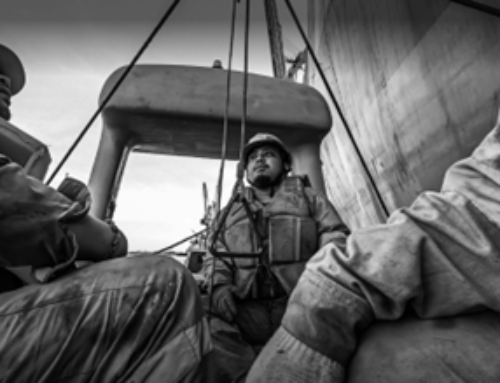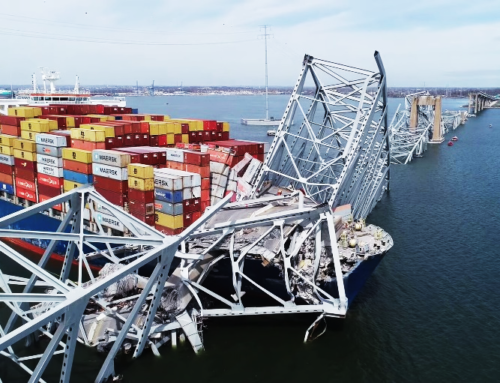Learning from the Past: Are Offshore Workers Prepared for a Hurricane?
 As the sun rises over tranquil waters and clear skies, it’s easy to forget the tempestuous power that hides beneath the surface of the ocean. But for those who work in offshore industries, the memory of past storms is a constant reminder of the imperative of offshore safety and hurricane preparedness.
As the sun rises over tranquil waters and clear skies, it’s easy to forget the tempestuous power that hides beneath the surface of the ocean. But for those who work in offshore industries, the memory of past storms is a constant reminder of the imperative of offshore safety and hurricane preparedness.
As offshore injury lawyers we want to remind you of the impact of past storms in order to protect the safety of offshore workers, and the resilience of critical infrastructure.
The Unpredictable Fury of Hurricanes
This year, the National Oceanic and Atmospheric Administration (NOAA) anticipates a hurricane season that falls within the range of near-normal conditions, predicting a 30% chance hurricane activity is either above or below the norm. According to the NOAA’s Climate Prediction Center, there is a 70% chance of encountering 12 to 17 named storms, and among these, it is expected that 5 to 9 may intensify into hurricanes, with winds of at least 74 mph. Between 1 and 4 of these could potentially develop into significant hurricanes, which are categorized as either Category 3, 4, or 5, with wind velocities of at least 111 mph and an estimated maximum of 190 mph!
Hurricanes are undeniably nature’s most destructive storms. With these incredible wind speeds, torrential rains, and storm surges that inundate coastal areas, these meteorological juggernauts pose an immense threat to life and property. The U.S. gulf coast and the Atlantic seaboard are particularly vulnerable to hurricanes, making offshore operations in these regions a precarious endeavor.
Even recently, we have witnessed the devastating impact of hurricanes like Katrina, Harvey, and Maria. These storms left a trail of destruction in their wake, causing billions of dollars in damages, and claiming countless lives. Offshore facilities, such as oil rigs and drilling platforms, are not immune to these forces of nature. In fact, they are exposed to unique risks due to their location on open water. But we can learn from the disasters of the past!
Some of the most significant examples of such storms are:
- Hurricane Ivan (2004): Ivan caused a massive underwater mudslide which collapsed the Taylor oil platform, resulting in an oil spill that is leaking to this day.
- Hurricane Katrina (2005): This Category 5 hurricane is one of the most devastating storms in U.S. history. Causing catastrophic damage to offshore platforms in the Gulf of Mexico, it destroyed 113 oil and gas platforms and damaging 457 pipelines, causing massive production losses.
- Hurricane Rita (2005): Just a month after Katrina, Hurricane Rita led to further damage in the already vulnerable region.
- Hurricane Ike (2008): This hurricane also caused significant damage to offshore infrastructure in the Gulf of Mexico, destroying several platforms and pipelines.
- Hurricane Harvey (2017): A Category 4 hurricane, this storm led to a temporary shutdown of nearly 25% of the oil and gas production in the Gulf. Its slow movement led to prolonged impacts, with massive rainfall causing flooding and infrastructure damage.
- Hurricane Laura (2020) and Delta (2020): These storms caused significant disruptions, evacuations, and shutdowns in U.S. Gulf Coast oil and gas operations.
- Hurricane Ian (2022): Ian struck the Gulf as a Category 4 hurricane, and disrupted about 11% of production in the area. Roughly 190,000 barrels of oil per day in production were lost.
Lessons from History
 Looking back on past storms provides invaluable lessons for offshore safety and hurricane preparedness. Hurricane Katrina, which struck the Gulf Coast in 2005, serves as a stark reminder of the consequences of inadequate preparation. The failure of levees and the flooding of New Orleans were headline-grabbing disasters, but the offshore oil and gas industry also suffered extensive damage. Oil spills, damaged platforms, and disrupted production had far-reaching economic and environmental consequences.
Looking back on past storms provides invaluable lessons for offshore safety and hurricane preparedness. Hurricane Katrina, which struck the Gulf Coast in 2005, serves as a stark reminder of the consequences of inadequate preparation. The failure of levees and the flooding of New Orleans were headline-grabbing disasters, but the offshore oil and gas industry also suffered extensive damage. Oil spills, damaged platforms, and disrupted production had far-reaching economic and environmental consequences.
Fortunately, these disasters prompted a reevaluation of safety protocols and emergency response procedures within the industry. New technologies and engineering innovations have been implemented to strengthen the resilience of offshore facilities against hurricanes. More robust materials, improved storm tracking, and enhanced evacuation plans are just a few of the measures that have been put in place to mitigate risks.
Ensuring Offshore Worker Safety
As offshore injury lawyers, we are aware that offshore workers are the backbone of the industry, and their safety is paramount. Lessons from past storms have led to improved training programs and safety protocols for workers, ensuring that they are better equipped to handle the challenges posed by hurricanes.
Additionally, offshore companies have a responsibility to prioritize the well-being of their employees. Evacuation plans, adequate shelter provisions, and communication systems have all been upgraded to provide offshore workers with the best chance of surviving a hurricane’s onslaught.
The Importance of Collaboration and Preparedness
Experiencing these storms has further underscored the importance of collaboration among government agencies, environmental organizations, and the private sector. Hurricane preparedness is a collective effort that requires cooperation and coordination at all levels. This includes sharing data, conducting joint exercises, and developing comprehensive emergency response plans that address the unique challenges of offshore operations.
Technology also is an important tool in preparing for hurricanes as well. Satellite data and predictive weather modeling are vital to protecting the safety of offshore workers, and provide real-time monitoring that can alert workers to dangerous weather conditions ahead of time. Ensuring the structural integrity of the work environment also is incredibly important, such as utilizing fortified mooring systems or specialized materials that can withstand catastrophic natural events.
Furthermore, investing in research and development is essential. The effects of climate change are making hurricanes more frequent and intense, which means offshore safety and hurricane preparedness must continually evolve to adapt to this changing landscape.
In the serene moments between storms, it can be easy to become complacent. But for those whose livelihoods depend on offshore industries, the imperative of offshore safety and hurricane preparedness remains steadfast. Learning from past storms reminds us of the devastating consequences of underestimating the power of nature and the importance of proactive measures to protect lives, property, and the environment. It is a reminder that we must continue to innovate, collaborate, and prioritize safety to ensure the resilience of offshore operations in the face of an unpredictable and potentially catastrophic force of nature.
We at the Herd Law Firm are offshore injury lawyers, representing and advising offshore workers. We are proud to support maritime workers and passengers in all types of struggles on the waterways, and never waver in our commitment to help these maritime workers and their families when they are injured or killed.
To learn more, visit the NOAA hurricane center at https://www.nhc.noaa.gov/
9/11/2023







